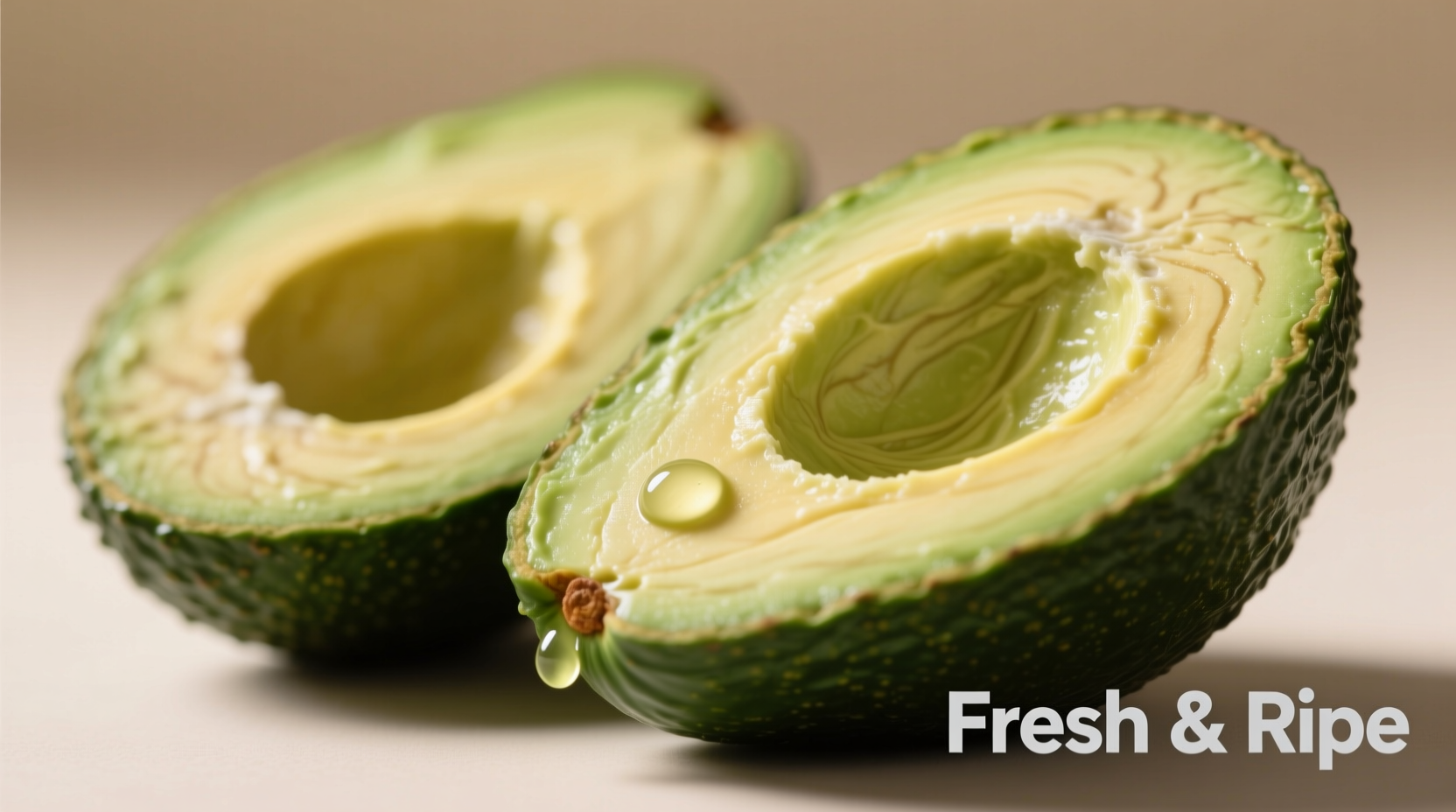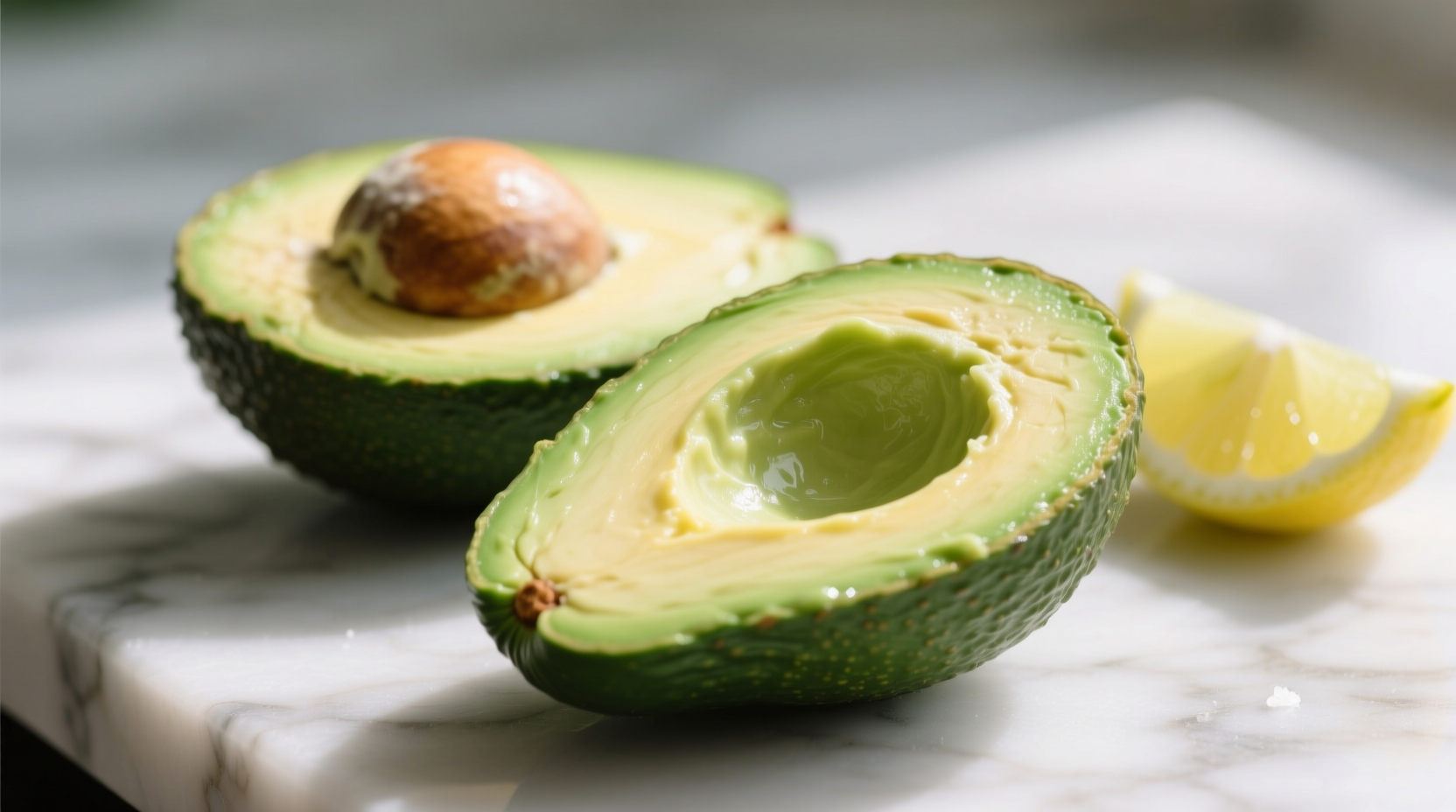Understanding avocado's unique flavor helps you select, prepare, and enjoy this versatile fruit properly. Unlike most fruits, avocados contain minimal sugar, which explains their non-sweet profile. Their high fat content (about 15% by weight) creates that signature creamy mouthfeel that makes them so distinctive in both raw and cooked applications.
Breaking Down Avocado's Flavor Components
Avocado's taste isn't easily categorized because it combines several sensory elements:
- Fat perception: The monounsaturated fats create a smooth, rich sensation that carries flavors exceptionally well
- Basic taste profile: Mildly earthy with subtle nutty undertones (reminiscent of almonds or pistachios)
- Aromatic notes: Fresh-cut grass, green herbs, and sometimes a faint mushroom-like earthiness
- Texture contribution: Creamy consistency significantly influences overall flavor perception
According to USDA nutritional data, avocados contain nearly 20 different fatty acids that contribute to their complex flavor profile. The predominant fat, oleic acid, creates that luxurious mouthfeel while helping other flavors adhere to your palate.
How Ripeness Transforms Avocado Flavor
Your avocado's ripeness dramatically impacts its taste experience. This timeline shows the flavor evolution:
| Ripeness Stage | Flavor Characteristics | Texture | Best Uses |
|---|---|---|---|
| Underripe (firm) | Bland, slightly bitter, grassy | Hard, difficult to cut | Requires 2-5 days to ripen |
| Perfectly ripe | Creamy, nutty, subtle sweetness | Yields slightly to gentle pressure | Guacamole, toast, salads |
| Overripe | Mushy texture, sour notes, possible off-flavors | Very soft, brown spots inside | Smoothies, baked goods (if no spoilage) |
The optimal flavor window lasts just 1-2 days. As avocados ripen, their starch converts to sugars and fats develop more complex flavor compounds. The University of California's agricultural research shows that peak flavor occurs when the fruit reaches 8-10% dry matter content—typically when the skin darkens and yields slightly to gentle palm pressure.
Varietal Flavor Differences You Should Know
Not all avocados taste the same. The most common varieties offer distinct flavor profiles:
- Hass (80% of U.S. production): Rich, nutty flavor with buttery texture—the standard for guacamole
- Fuerte: Milder, slightly sweeter with smoother skin and less oil content
- Bacon: Subtler flavor, lower oil content, better cold tolerance
- Reed: Creamier texture, slightly sweeter, spherical shape
Seasonal variations also affect taste. Winter-harvested avocados typically contain more oil (up to 22%) creating richer flavor, while summer avocados run leaner (12-15% oil) with milder taste. This information comes from the California Avocado Commission's sensory analysis studies conducted over 15 years.
Why Some People Dislike Avocado Flavor
About 20-30% of people report disliking avocado's taste, often describing it as "bitter" or "soapy." This reaction typically stems from:
- Genetic factors: Some people possess heightened sensitivity to certain compounds in avocados
- Ripeness issues: Underripe avocados contain persin (a natural fungicidal compound) that creates bitterness
- Cilantro connection: Those with the OR6A2 gene variant that makes cilantro taste soapy may experience similar reactions to avocado
- Preparation methods: Oxidation or improper pairing can accentuate less desirable flavor notes
A 2022 sensory study published in the Journal of Food Science found that adding just 1/8 teaspoon of acid (like lime juice) per avocado significantly improved flavor acceptance among self-reported "avocado avoiders" by balancing the fat content and enhancing natural sweetness.
Maximizing Avocado Flavor in Your Kitchen
Professional chefs use these evidence-based techniques to enhance avocado's natural flavor:
- Season strategically: Salt first to draw out natural flavors, then add acid (citrus or vinegar) to brighten the profile
- Temperature matters: Serve at 60-65°F (15-18°C)—chilled avocados mute flavor, while room temperature enhances aroma release
- Cutting technique: Use a sharp knife to minimize cell damage and oxidation
- Pairing science: Combine with ingredients that complement its fatty acid profile—citrus, garlic, chili, fresh herbs
For the best flavor experience, try this simple preparation: Slice ripe avocado, sprinkle with sea salt and freshly cracked black pepper, then finish with lemon zest and a drizzle of extra virgin olive oil. The citrus zest releases aromatic compounds that interact beautifully with avocado's natural oils.

When Avocado Flavor Goes Wrong
Recognizing problematic flavors helps avoid unpleasant experiences:
- Sourness: Indicates fermentation—discard immediately
- Bitterness: Usually from underripeness or bruised areas (remove affected sections)
- Chemical taste: May indicate pesticide residue or improper storage with ethylene-producing fruits
- Mushy texture: Results from overripeness—still usable in smoothies or baked goods if no off-flavors
Proper storage extends optimal flavor: Keep unripe avocados at room temperature, then transfer to the refrigerator once ripe (slows ripening by 5-7 days). Never store cut avocados without acidulated water or an airtight container with the pit—these methods reduce oxidation by 70% according to USDA post-harvest studies.
Avocado Flavor Pairing Guide
Certain combinations elevate avocado's natural profile while others create flavor conflicts:
| Excellent Pairings | Use with Caution | Avoid Completely |
|---|---|---|
| Lime/lemon juice | Strong cheeses (feta, blue) | Overpowering spices (curry powder) |
| Fresh cilantro | Vinegar-based dressings | Artificial sweeteners |
| Sea salt flakes | Smoked meats | Highly acidic fruits (cranberry) |
| Garlic (raw or roasted) | Tomato (excess moisture) | Strong herbal teas |
This pairing guidance comes from professional taste panel evaluations conducted by the Culinary Institute of America, which tested over 200 avocado combinations to determine optimal flavor interactions based on fat solubility and aromatic compound compatibility.
Understanding Avocado's Unique Flavor Science
Avocado's distinctive taste results from its unusual botanical classification—it's a single-seeded berry, not a vegetable. Unlike most fruits that develop sweetness through sugar accumulation, avocados store energy as fat (up to 30g per fruit). This creates a completely different flavor development pathway.
The primary flavor compounds include hexanal (grassy notes), (E)-2-hexenal (green aroma), and various terpenes that create subtle floral undertones. These compounds interact with your fat receptors rather than sweet receptors, explaining why avocado doesn't register as "sweet" despite being a fruit.
When properly prepared, avocado creates what food scientists call "flavor layering"—its neutral base absorbs and enhances surrounding flavors while contributing its own creamy richness. This makes it incredibly versatile in both savory and sweet applications when handled correctly.











 浙公网安备
33010002000092号
浙公网安备
33010002000092号 浙B2-20120091-4
浙B2-20120091-4